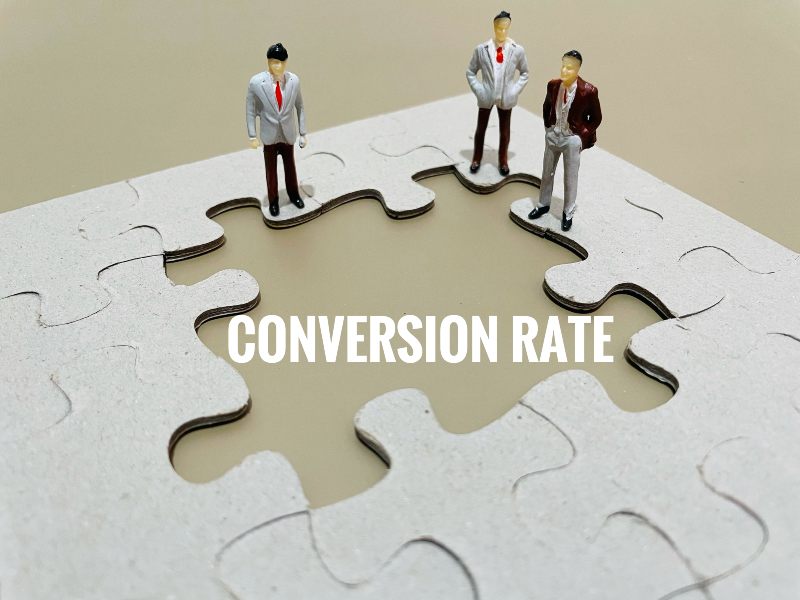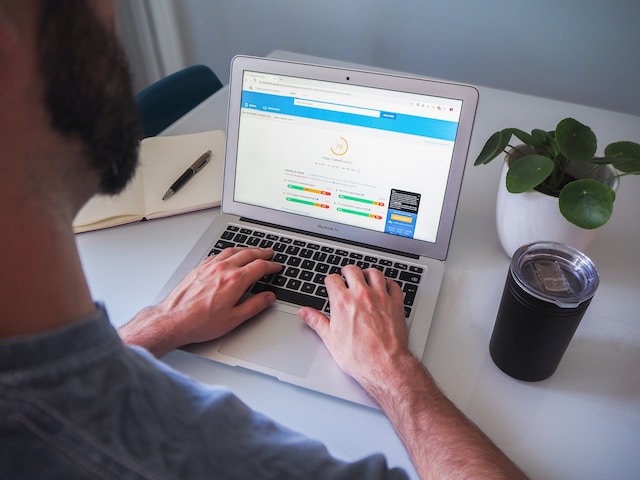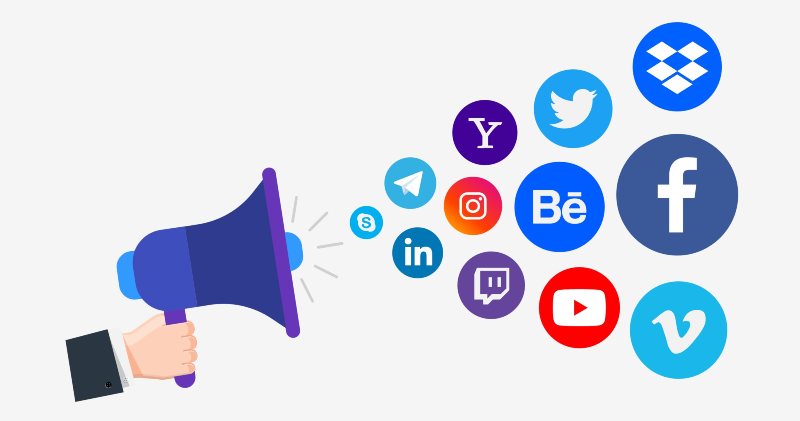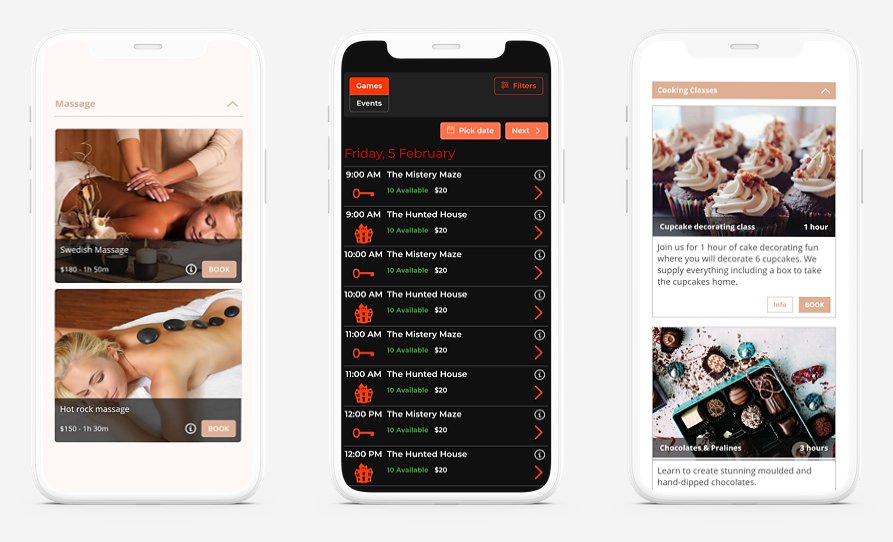
The Complete Guide on How to Increase Website Conversions
In this modern era, having a website is essential for any business of all sizes and in any industry. However, having a well-designed and fully functional website alone isn’t enough.
To be exact, attracting visitors to your website alone isn’t enough if you can’t convert these visitors into leads, subscribers, or paying customers. Without optimal website conversion, you won’t be able to generate more revenue, maximize the ROI of your marketing campaigns, and grow your business.
In this complete guide on how to increase website conversions, we will discuss all you need to know about how to optimize your website and the surrounding factors to convert more leads and customers.
By the end of this guide, you’d have learned about:
- The concept of website conversion and its importance
- How to identify and understand your website’s target audience
- Important foundations for optimizing website conversions
- How to develop compelling website content
- Leveraging social media to support your website’s conversion performance
- Improving conversions for websites with online booking/appointment functions
And more.
Without further ado, let us begin from the basics: what is website conversion?
What is website conversion?
Website conversion refers to the process of convincing website visitors to take a desired action, turning them from visitors into leads, subscribers, or paying customers.
This action can be anything: submitting their email address to an input box, filling out a contact form, signing up for an email newsletter, downloading a free trial, making a purchase, or any other actions.
The idea is that taking these actions will bring the website visitor one step closer to driving revenue for the business.
Website conversion rate
A website conversion rate is the percentage of visitors who completed the aforementioned desired action on the website.

To calculate the website conversion rate, simply divide the number of website visitors who completed the action (i.e., making a purchase, filling out a form, downloading gated content, etc. by the total number of website visitors, and multiply it by 100.
Or:
Website Conversion Rate = (Number of Website Visitors Who Completed Desired Action / Total Number of Website Visitors) x 100%
For example, if you have 5,000 monthly website visitors, and 100 of them made a purchase in a month, then the website conversion rate would be:
100/5,000 x100% = 2%
Is this 2% website conversion rate good? The “healthy” website conversion rate depends on many different factors: the desired action, the industry, website type, business goals, target audience behaviors, and so on. However, as a general rule, a 2%-5% conversion rate is considered healthy for most website types.
The importance of improving website conversion rate
Why is it essential to optimize your website for conversion and improve its conversion rate?
A higher conversion rate can lead to various benefits for the business, including:
- Increased revenue: higher conversion rate would result in more leads generated, more subscribers, and more sales. Ultimately these will lead to increased revenue and profitability for the business. Even a small increase in website conversion rate can result in major revenue and profit boosts.

- Cost-effective campaign: compared to other forms of marketing efforts and advertising, improving the website conversion rate is more cost-effective. Optimizing your website’s conversion won’t require the business to invest in additional advertising and marketing expenses while at the same time improving the value of the website.
- Improved user satisfaction: in the majority of cases, optimizing website conversion rate typically involves improving the site’s user experience, such as incorporating better design, streamlining the checkout process, offering more relevant content, etc. These changes can improve customer satisfaction, leading to higher retention and advocacy.
- Competitive advantage: improving the website’s conversion rate and the website, in general, will help the business stay in the competition and even stand out from its competitors.
- Data-driven decision-making: optimizing a website’s conversion rate often involves collecting and analyzing data, helping the business make more informed decisions in various scenarios.
In short, improving website conversion rate is simply essential for businesses to succeed in today’s digital environment.
Identifying and understanding your target audience
A critical foundation in improving website conversion rate is to make sure the website caters to the target audience’s needs, goals, and preferences, and this is simply impossible if we don’t understand—or worse, don’t know—who your target audience is.
Here are some steps you should take to identify your target audience and understand them better:
- Identify who your target audience is
If your website has been around for some time with a sizable amount of visitors, then you can start by analyzing your existing traffic and/or customer base. Identify patterns and common characteristics, such as demographics, behaviors, and interests by using tools such as Google Analytics to collect and analyze data.

However, if you’re starting a brand new business or website, an alternative method is to perform a competitive analysis to identify who your direct and indirect competitors are targeting. You can either pursue the same target audience or identify gaps and opportunities to target.
- Understanding their needs, goals, and preferences
Once you’ve identified who your target audience is, the next step is to gather as much information as you can about them.
You can invite your customers for an interview, create focus group discussions, or conduct surveys (online and offline) to gather insights into their needs, pain points, interests, and what they are looking for in a website, and common obstacles preventing them from converting.
These insights will enable you to create a website that addresses their specific requirements, provides more value, and convinces them to convert.
- Creating a buyer persona
A buyer persona is a fictional model (a character) that represents your ideal audience.
The buyer persona should include as many details as you can include: their demographics, goals, behavior patterns, pain points, etc.

The idea of creating a buyer persona is so you can put yourself in your target audience’s shoes so you’ll know what to optimize on the website according to their specific needs, wants, and pain points.
In short, create a website that provides value to your target audience and speaks directly to them.
Website conversion optimization: improving technical factors
Once you’ve understood who your target audience is and have more insights into their needs and goals, the next step is to optimize the technical aspects of your website.
Improving various technical factors of your website is critical to encourage website conversions: a website that is fast to access, easy to navigate, and responsive with streamlined checkout/signup functions will enhance user experience, leading to higher conversion rates.
Here are some critical technical factors to optimize when it comes to website conversions:
1. Website design and layout
A well-designed website with a clear, navigable layout will significantly improve user experience.

If the website is too difficult or confusing to navigate, not only will your visitors be discouraged from converting, but it can lead to frustration and an increase in bounce rate.
Make sure to incorporate a clutter-free, easy-to-navigate design so it’s easier for users to find what they are looking for.
2. Optimal user experience (UX) design
Still related to website design, UX (user experience) design is optimizing various aspects of the website to make sure the visitor’s interaction with the website and their journey through it is as intuitive and seamless as possible.

Some important elements of UX design include:
- Intuitive navigation: easy-to-find and easy-to-use navigation, like optimal menu placement, prominent links, CTAs, etc.
- Easy-to-use forms: easy-to-use and easy-to-understand forms that are also mobile optimized, eliminating potential obstacles for visitors to fill them out.
- Consistency: consistent design, such as incorporating the same color scheme and font throughout the website, can help improve the website’s cohesiveness and improve user experience.
- Accessibility: it’s critical to make sure the website is easy to use for everyone, regardless of their abilities. Make sure to add accessibility features throughout the website, including a high-contrast design option, alt text for non-textual content, keyboard navigation tools, and so on.
3. Website speed and performance
According to Google, more than 50% of website visits are abandoned if a mobile site loads more than 3 seconds.
It’s critical to make sure your website load speed to reduce bounce rate, keep users engaged with your website, and maximize conversions.

Use Google’s PageSpeed Insights tool to evaluate the website’s speed performance so you can optimize it accordingly, for example, by reducing/compressing file sizes for images and videos, using caching and minifying codes.
4. Mobile responsiveness
More and more people are browsing the internet (exclusively) on their mobile devices. So, if your website isn’t optimized for mobile, you are essentially alienating and certainly won’t convert them.
Make sure your website incorporates a mobile-responsive design that is accessible on different devices and screen sizes. To start, you can assess your website using Google’s Mobile-Friendly Test tool.
Optimize your layout and content for mobile, and test on as many devices as possible to ensure a seamless user experience.
5. Prominent and optimized CTAs
A clear, compelling, and well-placed CTA (call-to-action) is critical to encourage website conversions.

The CTA’s role is to attract and guide visitors toward the desired action, so it’s critical to optimize your CTAs to make sure they are easy to find, clear, and compelling.
Creating compelling and conversion-optimized content
Content plays a critical part in increasing website conversions: if potential customers find your content valuable, relevant, and trustworthy, they are more likely to trust your business and convert.
Content creation and optimization is a very in-depth subject on its own that deserves its own guide. However, here are some important considerations to optimize content for conversions:
- Focus on user intent: make sure your website content aligns with the goals, needs, and pain points of your target audience. Use language, terminology, and messaging that resonates with their pain points and resonates with their goal.
- Write engaging headlines: it’s important to make sure your content headlines are engaging and compelling to keep visitors consuming your content. An optimized headline should be concise, clear, and descriptive, but at the same time, should pique the reader’s curiosity. A conversion-focused headline ideally must also create a sense of urgency to encourage visitors to learn more.
- Improve readability: make it as easy as possible for visitors to consume your content. Keep website content simple and easy to understand by using concise language instead of jargon or technical terminology that may alienate your readers.

- Incorporate persuasive language: your website’s copy must be persuasive to encourage visitors to take the desired action. Use active verbs and language that appeals to your target audience. Emphasize the values/benefits of your product or service, and address your target audience’s pain points.
- Leverage visual content: visual content like images, infographics, gifs, and videos can help make your website more appealing and engaging. They can also be effective in delivering complex information in a more digestible format to improve engagement.
- Highlighting social proof: social proof such as reviews, case studies, and testimonials can be very effective in encouraging conversions. Effective placement of social proof can help overcome any doubts or objections the visitors may have and may lead to higher conversion rates.
- Well-crafted and well-placed CTA: to ensure conversion, it’s critical that you make it clear what actions you’d want your visitors to take next by placing clear and prominent CTAs. Your CTAs should be clear and concise. Use action-oriented language that highlights the tangible benefits of taking the desired action.
Leverage social media to support your website
With most, if not all, of your target audience active on social media, it’s quite obvious that you should also leverage social media platforms to increase your website’s conversion rate.

Here is how:
Build social proof through social media
Highlight positive reviews, testimonials, case studies, and other forms of user-generated content on your social media, and link these posts to your website.
This can help establish credibility and trust among your target audience, eliminate doubts, and encourage them to convert to your website.
Leverage social media ads to drive traffic
Most major social media platforms (Facebook, Instagram, LinkedIn, etc.) now offer paid advertising and promotion options that can help you drive traffic to your website.

While it’s not directly about conversion rate, remember that higher traffic also means higher chances of conversions. So, targeting paid ads to your ideal audience can improve your chances of converting them into paid customers.
The key is to create compelling ads that will attract your target audience. Make sure the ad is visually appealing and include concise CTAs that will encourage people to click through to your website.
Encourage social sharing
Make it easy for your website visitors and social media followers to share your content or your website with their audience. Add prominent social sharing buttons on your blog posts, website, and other content. If necessary, provide pre-written captions and tweets that users can use to share your content.

Leveraging social media allows you to build awareness of your website and brand, establish credibility, drive more traffic to your website, and ultimately, improve the chances of conversions. It’s critical not to underestimate the potential of social media in supporting your website and as one of the key foundations in your overall marketing strategy.
Implementing conversion optimization tools
Today, there is a wide variety of software and tools available to help you optimize website conversion rate and website performance in general.
Some of them may help you analyze various performance metrics of your website, including user behavior, identify bottlenecks and areas and improvement, and test the changes you’ve implemented.
Consider leveraging:
Website analytics tools
Website analytics tools like Google Analytics, Piwik, or Adobe Analytics will provide valuable insights into visitors’ behavior when they are on your website. These tools can help you track metrics such as page views, bounce rates, click-through rates, and other relevant metrics to help you analyze how your visitors are using your website.

The idea is to identify areas on your website that aren’t performing well and can be potential obstacles to conversion, so you can optimize them accordingly.
A/B testing tools
A/B testing, sometimes referred to as split testing, is testing two different versions of a web page (or a specific element of a web page) and evaluating which one performs better.
For example, we can test two different versions of a page, each with a different featured photo, and assess their performances, especially conversion rates. Doing so can help you identify which elements you should use to convert more visitors into leads or customers.
Some popular A/B testing tools available in the market are Unbounce, VWO, and Optimizely.
Heatmap tools
Popular heatmap tools include Crazy Egg, Hotjar, and ClickTale.
As the name suggests, heatmap tools allow you to view your website’s “heatmap,” which is a visual representation of where users are clicking on your web page or website. Analyzing your heatmap can help you identify which pages or which areas of your website are the most engaging for users and which areas aren’t very effective.
In turn, this data can help you make informed decisions about how to optimize your website for conversions: where to put your CTA buttons, where you should communicate your offers, and so on.
Chatbots
With the increasing popularity of automation and AI-driven innovations, chatbot integration on websites has gained massive traction in recent years as a way to provide automated, fast, and personalized assistance to visitors.

Chatbots can answer website visitors’ questions, provide recommendations, and even help users complete their purchase transactions. By offering this timely and responsive support, you can improve user satisfaction and increase the chance of conversions.
There are many chatbot tools available in the market at various price tags, including Botsify, Tars, ManyChat, Drift, and others.
Increasing conversions for websites with online booking functions
For service businesses that rely on client appointments (i.e., yoga classes, beauty salons, escape rooms, dental offices, etc.), it’s becoming increasingly common to have an online 24/7 booking system on the website, especially due to the shifting consumer behavior and expectation after the global COVID-19 pandemic.
For websites with online booking functions, the ultimate conversion goal is to encourage visitors to book their appointment, so the main conversion optimization you should make is to streamline the reservation process.

Below are some tips on how to increase the number of bookings
- Streamline the booking process
It’s critical to make the whole reservation process as easy as possible for visitors. A complex and confusing booking process can discourage visitors and may result in abandoned reservations. Here are some key optimization options you should make:
- Reducing the total number of steps required to complete a booking
- Reduce the number of fields in the registration form. Make sure it’s easy to fill the fields on mobile devices
- Use clear and concise language to guide visitors through the booking process
For example, Airbnb famously simplified its booking process so customers can easily rent a property in just three clicks.
- Provide multiple payment options
Offering multiple (especially popular) payment options can reduce customer friction during the reservation process, so they are more likely to finish their bookings.
At the very least, make sure to accept various credit cards, PayPal, Stripe, Apple Pay, and other popular payment methods in your location.
- Offer interesting discounts and promotions
Limited-time offers, compelling promotions, and discounts can incentivize customers to make their reservations, which will ultimately result in increased conversion rates.

You can offer early bird discounts, loyalty programs, group discounts, referral codes, and so on. For example, you can offer free upgrades for customers who make repeated bookings in a single month.
- Leverage social proofs
Display customer reviews, testimonials, and success stories on your online booking page to help build trust and credibility so they won’t abandon the booking process. Encourage your existing customers to leave their reviews so you can continue displaying social proof on your website.
Also, promptly respond to reviews, including negative ones, in a professional and helpful manner. This will show that you listened to concerns and complaints, establishing your reputation, encouraging more people to book your service, and also reducing potential friction when customers are willing to leave their reviews.
Conclusion
Improving your website’s conversion rate is critical for any business looking to establish its online presence, build brand awareness, and increase its business revenue.
In this guide, we’ve outlined the key steps necessary to optimize your website for conversion, including understanding your target audience, technical optimizations for your website, creating attractive content, and leveraging various conversion optimization tools to achieve success.
By implementing these strategies, you can optimize your website to be as user-friendly as possible and encourage more conversions.
Yet, remember that website conversion optimization shouldn’t be a one-off thing but rather a continuous process. Continue to monitor and adjust your strategies based on measured data, and improve your website’s conversion rate over time.

